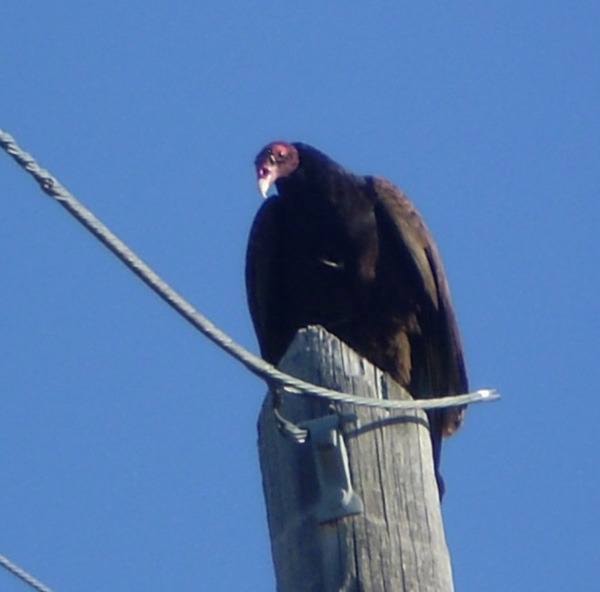Derrick Denholm and Ben Reynolds were timber-cruising in the Wisteria area for Free Growing Forestry of Burns Lake, when they came across a turkey vulture earlier this month. It was feeding on a decaying moose-calf carcass.
The turkey vulture, or the cathartes aura, as the more ornithologically inclined might prefer to call it, is a rare bird in Northern B.C.
According to the vulture society, the bird’s summer range includes the southern parts of B.C. and Alberta, and extends to Tierra del Fuego, the southernmost tip of South America.
Despite it’s less than glamorous appearance, the turkey vulture is one of the greatest soaring birds, capable of gliding along thermal lifts over incredible distances. A turkey vulture born in Southern B.C., for example, might spend its winter in Venezuela (proving they are a wise bird as well).
Denholm, who said this sighting of the bird was the first time he had ever seen one in the Lakes District in his 25 years of forestry work, suggested a link between this bird’s northward migration and a general trend towards a warming climate in general.
“Everything is turned upside down,” he said. “For those who don’t believe that climate change is happening, turkey vultures in Ootsa country is a strange one, that’s for sure.”
Local conservation officers report that the bird is occasionally sighted this far north of its usual habitat, but it is a rare occurrence.
While one turkey vulture sighting in Ootsa does not make a statistical trend, the University of British Columbia’s Centre for Forest Conservation Genetics (CFCG) has been tracking shifts in the B.C. ecosystem since 2000, and has noted some alarming scenarios.
“Based on our model predictions,” said Dr. Tongli Wang, associate director of the CFCG, about 20 per cent of the BC land has already shifted to climates characteristic of different ecosystem zones since… 1961-1990.”
The Lakes District is in the sub-boreal spruce (SBS) zone, predominately covered with lodgepole pine and spruce. This zone is singled out as being exceptionally sensitive to climate change.
Wang’s 2012 research with the CFCG places the Lakes District ecosystem near the heart of projected changes to B.C. forest systems within this century. The ‘virtual disappearance’ of our SBS ecosystem is ‘the first large projected change to occur in B.C. under optimistic climate change scenarios’, reads the 2012 study titled, Projecting future distributions of ecosystem climate niches: uncertainties and management applications.
Shifting ecosystems means a lot for the future viability of trees being planted now. According to the research, the Lakes District could see a shift from a climate favourable to current pine and spruce species to one that favours species of dryer and warmer interior Douglas-fir ecosystems.
The turkey vulture as harbinger of things to come may seem like a stretch to some, but the idea isn’t without merit.
“It might be expected to see the changes in bird territories as birds respond faster than trees,” said Wang.
